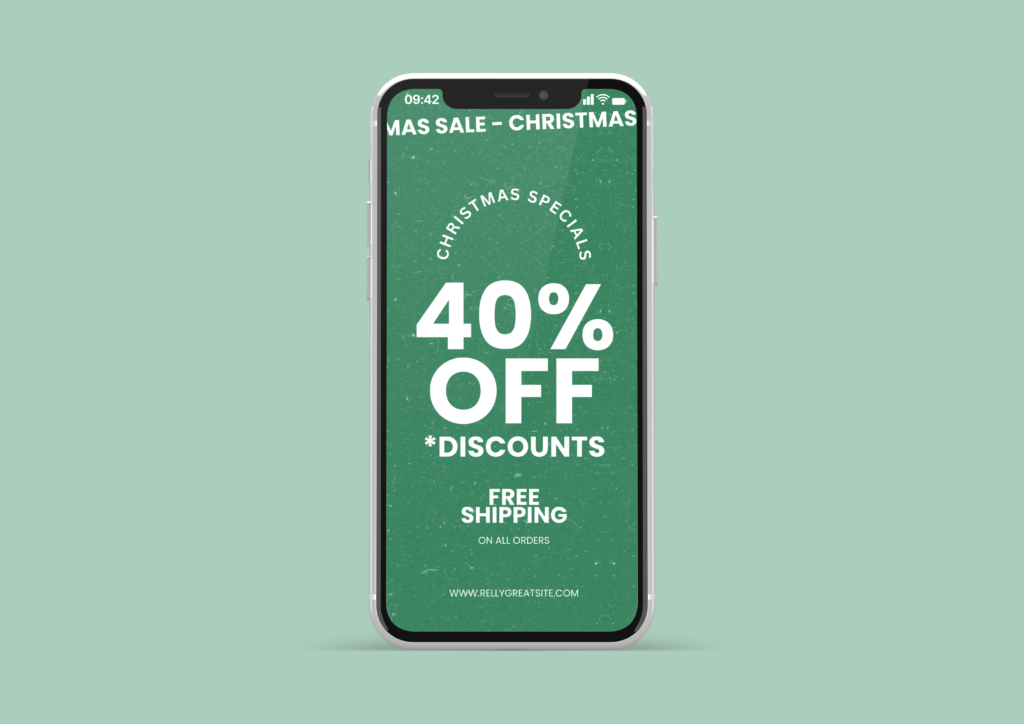
Seasonal promotions bring customers in—your loyalty program should keep them coming back. Restaurant owners often notice a surge in customers during seasonal promotions, but when the deals end, so does the engagement. Even with a loyalty program in place, it may not deliver the results you envisioned.
Tying your loyalty program to seasonal promotions ensures customers stay engaged, return more often, and increase your revenue. In fact, top-performing loyalty programs drive a 15-25% annual revenue increase from engaged customers.
In this guide, discover actionable strategies and best practices to optimize your loyalty programs during festive seasons to increase customer retention and maximize ROI (Return on Investment).
Benefits of Seasonal Promotions Campaigns
Seasonal promotions naturally drive higher demand and increased spending—whether it’s festive holiday dining or limited-time menu specials. However, a shared struggle for many restaurants is maintaining customer engagement once the deal ends. A well-designed loyalty program is crucial for turning one-time visitors into repeat diners—even beyond peak seasons.
How Seasonal Promotions Strengthen Customer Loyalty
- Increased customer traffic: Limited-time deals attract new and existing customers, boosting foot traffic.
- Higher spending rates: Loyalty program members dine out 20% more frequently and spend 20% more than non-members. This underscores the effectiveness of loyalty initiatives in boosting customer retention and revenue.
- Strengthens brand affinity: Seasonal campaigns tied to loyalty programs create lasting customer relationships.
Through limited-time loyalty perks, gamified rewards, and strategic postseason incentives, you can ensure that seasonal traffic converts into year-long customer retention.
Best Practices to Optimize Your Restaurant’s Loyalty Program for Seasonal Promotions
Plan ahead (but stay flexible)
Why it matters:
Seasonal promotions require careful planning to maximize engagement. The most effective campaigns are those that anticipate customer behavior and adapt loyalty rewards accordingly. However, trends and customer behavior can shift unexpectedly, so flexibility is essential.
A tiered approach also helps maintain momentum. Instead of front-loading deals, spreading out rewards ensures customer engagement doesn’t drop off too soon.
Best practices:
- Start early: Map out your loyalty promotions well in advance, tying rewards with seasonal campaigns to keep customers engaged.
- Have a backup plan: If a dish sells out, don’t let stock shortages disrupt your campaign. Instead, offer bonus points on a similar dish or extend rewards to another category.
- Analyze data to refine: Monitor customer preferences and tailor loyalty rewards to what truly drives repeat visits.
- Test and adjust: Monitor performance and be ready to tweak promotions based on real-time customer response.
Pro Tip
Use your loyalty SaaS (Software as a Service) platform to automate scheduling and make real-time adjustments for best results.
Align rewards with seasonal customer behavior
Why it matters:
Seasonal exclusivity makes promotions more compelling. Limited-time seasonal menus and special rewards drive customer interest and increased purchase. During the holiday season, customers are more likely to dine in groups—making rewards for large reservations a valuable strategy. Customers are more likely to return, if they know they can earn or redeem exclusive seasonal rewards.
Best practices:
- Design rewards that align with seasonal dining trends: Bundle rewards with experiences (e.g., a free appetizer for early holiday reservations).
- Offer time-sensitive promotions to boost engagement: Offer time-sensitive promotions to boost engagement: Create “last-chance” rewards to encourage customers to redeem their points before the season ends.
- Personalize offers based on customer insights: Reward group reservations with extra perks (e.g., free dessert for parties of five and more).
Example:
Starbucks’ Christmas reusable red cup campaign required customers to purchase a holiday drink to receive the limited-edition cup. This drove an increase in seasonal sales and encouraged repeat purchases.
Pro Tip
Use previous data to identify seasonal bestsellers and structure rewards around them. If last year’s Lunar New Year reunion sets were top-sellers, encourage early reservations with loyalty perks.
Create urgency with limited-time loyalty offers
Why it matters:
Scarcity drives action. When customers know an offer is temporary, they’re most likely to take advantage of it—boosting engagement within a short window. Strategic urgency, such as flash deals or expiring points, motivates customers to take action now rather than later. Additionally, well-timed SMS or app notifications remind loyalty members of exclusive and expiring deals.
Best practices:
- Launch flash deals to drive immediate action: Offer short-term perks (e.g., “Earn 200 extra points when you visit twice this week”).
- Encourage early participation with exclusive perks: Reward customers who engage early with first access to seasonal specials.
- Re-engage inactive customers with personalized deals: Promote last-chance redemptions to encourage customers to use their points before they expire.
Example:
A Thai BBQ restaurant successfully re-engaged inactive loyalty members by sending out personalized holiday offers via SMS. The campaign encouraged past customers to return with limited-time discounts and bonus rewards, resulting in over 50% of inactive members revisiting and generating RM38,000 in sales.
Pro Tip
Send timely push notifications or SMS reminders about expiring offers to create a sense of urgency and maximize redemption rates.
Gamify seasonal engagement
Why it matters:
Gamified promotions drive repeat visits and deepen brand loyalty by making engagement fun and rewarding. Who doesn’t enjoy the thrill of winning? By incorporating game-like elements, this approach adds excitement to seasonal promotions. If customers feel like they have a chance to win something valuable, they’re more likely to return.
Best practice:
- Automate gamified rewards: Streamline customer participation and tracking through your loyalty program platform.
Example:
A mini bowl restaurant introduced a holiday-themed Spin & Win campaign, where customers have the potential to win bonus points or free menu items. This interactive approach encouraged more frequent visits, leading to a 5% rise in customers spending over RM30 and a total revenue boost of RM26,259.
Pro Tip
Incorporate gamified rewards into your loyalty program to drive engagement. Features like digital scratch cards or point-based challenges can make seasonal offers more exciting and effective.
Promote across multiple channels
Why it matters:
Even the best loyalty program won’t drive results if customers aren’t aware of it. A multi-channel approach ensures maximum visibility, making it easier for customers to discover and engage with seasonal promotions.
Personalized outreach ensures customers stay informed about seasonal rewards and how to redeem them. Integrating promotions into digital orders and takeaway packaging also expands beyond in-store dining.
Best practice:
- Integrate loyalty promotions with online orders: (e.g., QR-coded rewards in takeaway or delivery packaging to connect digital and in-person engagement.).
Example:
A juice bar chain leveraged a seasonal collaboration with a food delivery platform by inserting QR-coded reward cards in takeaway bags. Customers who scanned the QR code were able to successfully redeem exclusive in-store perks and strengthen brand loyalty.
Pro Tip
Automate cross-channel messaging with your loyalty software to maintain a consistent and timely promotional strategy.
Post-promotion retention strategies
Why it matters:
Many restaurant owners focus on seasonal traffic but overlook post-holiday retention. A strong strategy keeps customers returning even long after seasonal offers expire.
Best practices:
- Offer bounce back incentives: Reward postseason visits with limited-time deals to encourage repeat business.
- Re-engage customers through direct messaging: Send personalized emails or SMS messages with special offers to maintain engagement.
- Leverage social proof to sustain momentum: Repost customer reviews or holiday highlights to keep engagement high.
Example:
A restaurant extended its seasonal success by rewarding customers with post-holiday perks via email. “Thank you” emails included a small bonus to encourage return visits (e.g., “Thanks for dining with us again! Here are 30 bonus points to use on your next visit!”).
Pro Tip
Use your loyalty program platform to automate follow-up messages with exclusive post-promotion deals to keep customers connected beyond seasonal promotions.
Measuring the Success of Loyalty Programs during Seasonal Promotions
To gauge the impact of your loyalty program efforts, track these key performance metrics:
- Redemption rates: How many customers are actually using their loyalty rewards?
- Repeat visit rate: Will customers come back even after the seasonal promotion ends?
- Average customer spending: Has spending increased among loyalty members?
Use a POS (Point Of Sale) system tracking, Google Analytics, and customer feedback surveys. A well-designed loyalty platform like SimpleLoyalty can help streamline this process by providing insights into redemption rates, repeat visits, and customer spending patterns.
Common Mistakes to Avoid
Carefully planned seasonal promotions can fall flat if not executed strategically. Key factors such as lack of promotion or unclear reward structures often go unnoticed—leading to low engagement and missed revenue opportunities.
Below are some common pitfalls to watch out for and how to avoid them:
Complicated loyalty reward structure
If rewards are confusing or difficult to redeem, customers won’t stay engaged. 71% avoid loyalty programs with overly complex redemption.
How to fix it:
- Keep it simple. Ensure customers understand how to earn and redeem points without hassle.
- Offer clear instructions via email, SMS or an FAQ section in your app or website.
- Use simple, tiered or point-based systems with clear benefits.
Lack of promotion
Even the best loyalty programs fail without proper marketing across email, SMS, and social media. Without consistent marketing, engagement remains low.
How to fix it:
- Promote loyalty perks across multiple channels.
- Use limited-time offers to create urgency and drive sign-ups.
- Leverage customer testimonials and user-generated content to boost credibility.
No postseason strategy
Engagement shouldn’t stop once the promotion ends. Many restaurant owners focus solely on in-season engagement and fail to retain customers postseason.
How to fix it:
- Offer bounce-back rewards (e.g., “Earn double points on your next visit!”).
- Re-engage customers with personalized follow-up emails or SMS messages.
- Use data insights to identify and reward customers with exclusive offers.
By avoiding these common mistakes, restaurants can ensure their loyalty programs continue delivering value—not just during peak seasons, but all year round.
Conclusion
Ready to turn a seasonal rush into year-round loyalty?
Small changes can make a big impact on your restaurant. Restaurant owners should start by adopting at least one strategy—whether that’s introducing limited-time offers, gamifying rewards, or enhancing post-season engagement. With the right tools, tracking and optimizing your loyalty program becomes much easier to maintain customer engagement beyond seasonal spikes.
Don’t let your seasonal promotion be a one-hit wonder—start integrating these best practices today to ensure your customers come back for more—even after the festivities end!


